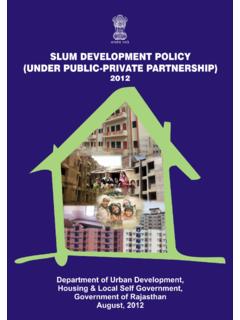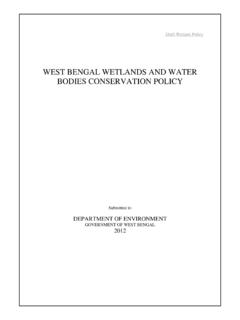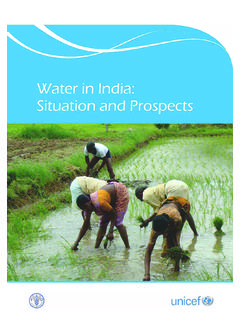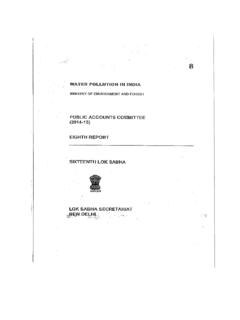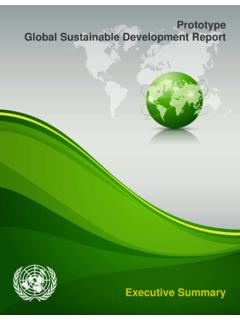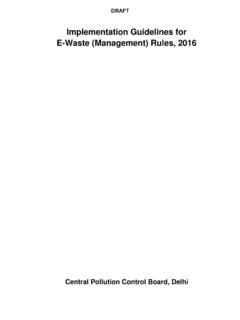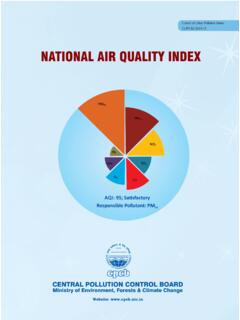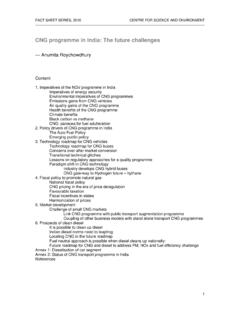Transcription of GM CROPS BT COTTON - India Environment Portal
1 GM CROPS201320 %6%India14%Canada17%Argentina12%Brazil17 %USAG enetically Modi ed (GM) CROPS commercialised for nearly 20 years. Industry data indicates a rejection by majority of the countries to adopt this controversial of global GM production is in USA, Brazil, Argentina, India & Canada. Despite the hype that GM is the fastest adopted technology, even these 5 countries use conventional farming in majority of agricultural land under GM CROPS cultivation in 2011 was 159 million hectares which is only 3% of the world s agricultural CROPS20 years of GM crop cultivation in USA lead to increased cost of cultivation due to increased use of herbicide. Cultivation of herbicide resistant CROPS has also led to a reduction in the biodiversity.
2 Recorded evidence of adverse impacts of Monsanto s glyphosate-based herbicide used along with GM herbicide tolerant CROPS on water, biodiversity and soil-plant system. This should be an eye-opener for policy makers that GM CROPS are not sustainable for farming or biodiversity and thus have no role to play in food Charles Benbrook, renowned agricultural economist stated in his studies that Resistant weeds have become a major problem for many farmers reliant on GE CROPS , and are now driving up the volume of herbicide needed each year by about 25%. NO PANACEA TO FOOD SECURITYA DISMAL PICTURE FOR FARMERSBT COTTON200220112006 - 072012 - 13200460% from COTTON advisory board shows that COTTON yield increased by 60% in 3 years between 2002-2004 When the area under bt COTTON was as little as there was no signi cant increase in yield until 2011 when the area under BT COTTON touched 96%.
3 Per per hectareBt COTTON adds to the increased burden of small and marginal farmers in India especially in the rainfed region which forms majority of COTTON BODY AND SUPREME COURT EXPERTS COMMITTEE ADVISES CAUTION AGAINST GM CROPSP arlimentary standing committee on Agriculture submits its report on GM food CROPS and categorically denies any role for GM CROPS in providing food security to our country. The report also points to the threats from GM CROPS to farming and farm Expert committee constituted by the Supreme Court of India highlights the potential impacts of GM CROPS to human health, biodiversity, socioeconomic situation of our country and advices a precautionary approach towards them.
4 SOLUTION To feed 9 billion people in 2050, we urgently need to adopt the most e cient farming techniques available. Agroecological methods outperform the use of chemical fertilisers in boosting food production where the hungry live- especially in unfavourable climates. To date, agroecological projects have shown an average crop yield increase of 80% in 57 developing countries with an average increase of 116% for all African projects. Recent projects conducted in 20 African countries demonstrated a doubling of crop yields over a period of 3-10 years. FOOD PRODUCTIONP roduction (Million Tonnes)Why are these mountains of food grain not being distributed to the people? Third of the children are born malnourished, half of children are underweight and a third of the adult population has a Body Mass Index (BMI) of below , one of the worst in the Planning Commission s estimate of the required subsistence calorie intake for de ning the poverty line is set at 2400 calories per person per day in rural areas and 2100 calories per person per day in urban areas.
5 At least 80% of the population in rural areas and 50% in urban areas fall below the required subsistence intake. BIG QUESTION:in India (the last 10 years)- Olivier De Schutter, UN special rapporteur on the right to food and author of the report, Agroecology and the right to food Source: les/pdfs/GMO_Myths_and_ ICMR Norm per family per month % of current production required under Universal PDS(2008-2009) Foodgrai ns 50kgs Half of the total food grain pro duction in the country Edible Oils 65% of the total edib le oil pro duction. Pulses 68%-72% of the total puls es pro duction India stands way down the Global Hunger Index at 65th out of 88 nations, worse than many Sub Saharan African countries.
6 Source: Right To Food Campaign: Food Security, What the Government Says and What we want, 2011, Indian Government is sitting on one of world's biggest hoards of food grains, about 667 lakh tons as of January 1, 2013, making the current stock times more than the Government s benchmark for bu er stocks (TOI, Jan 18th, 2013). In fact, reports of rotting food grains in our Food Corporation of India (FCI) godowns have become a regular feature multipronged approach which includes (a) the promotion of sustainable food production systems, (b) e cient food distribution and (c) ensuring livelihood security of citizens is the way forward for our country to be food secure, now and in future.

